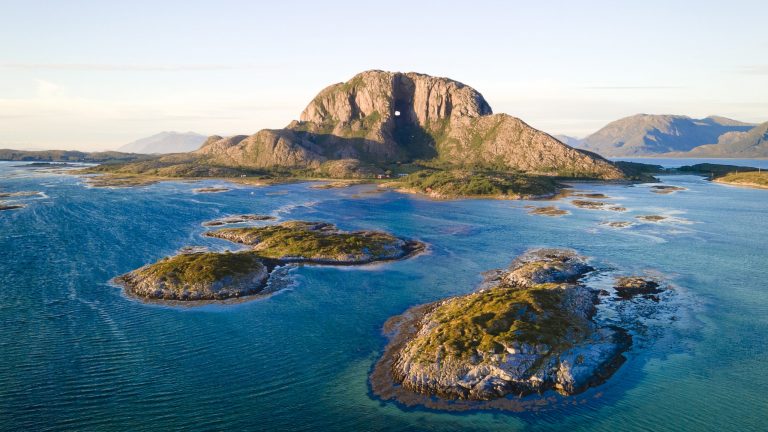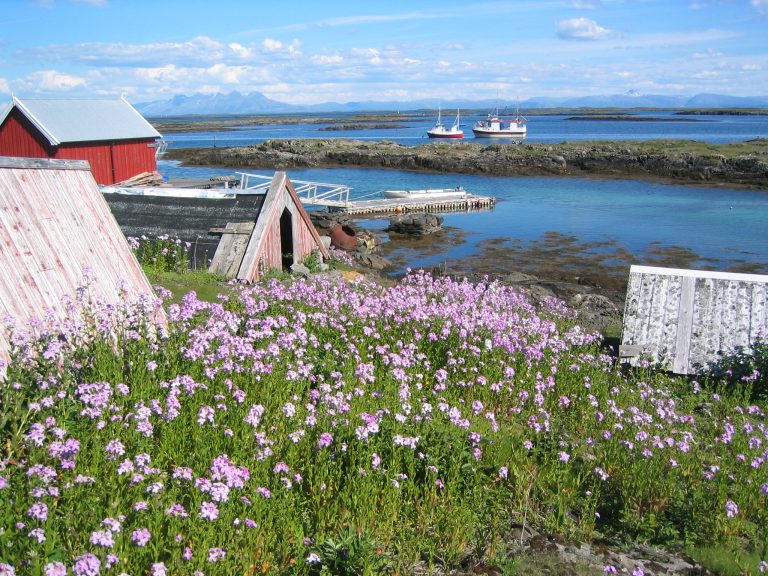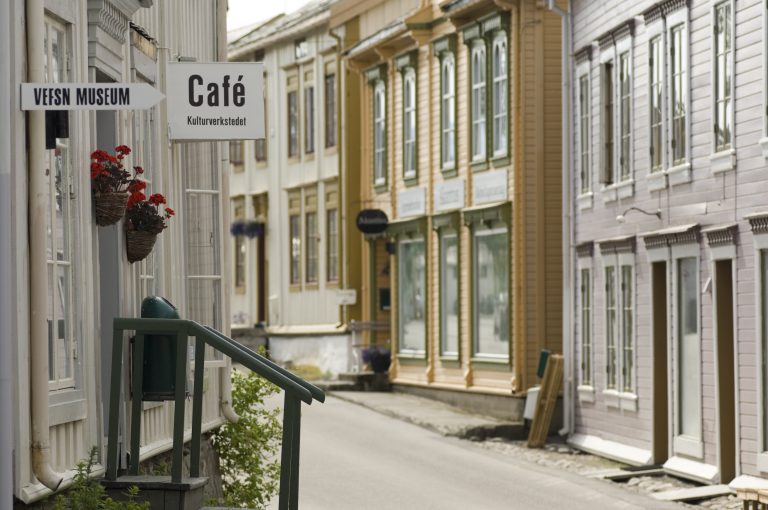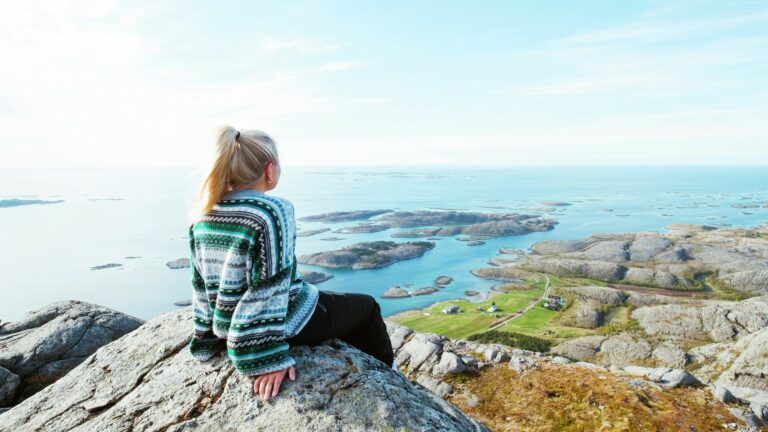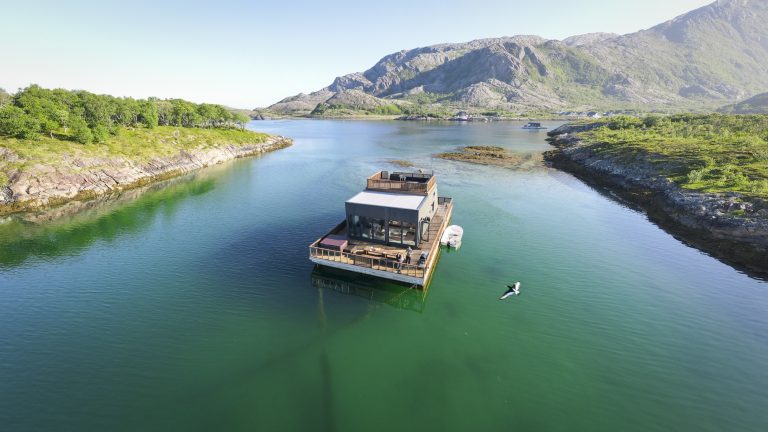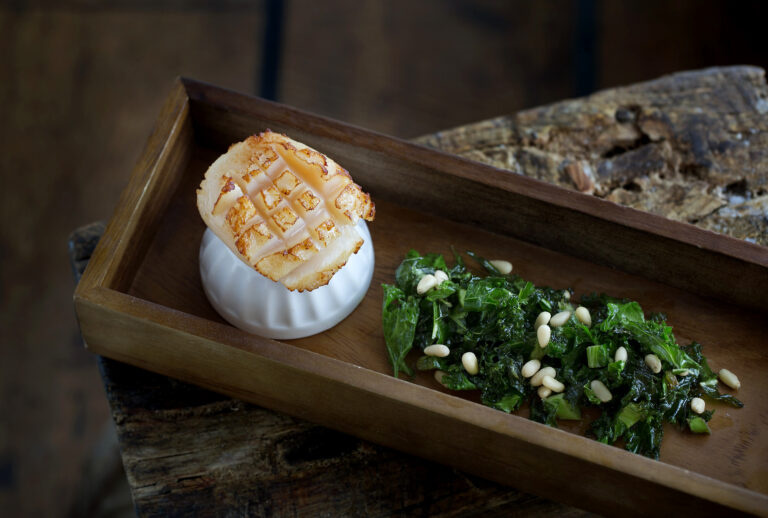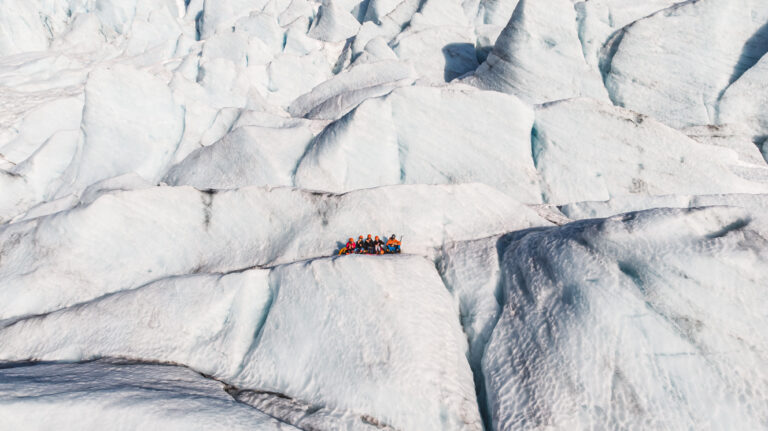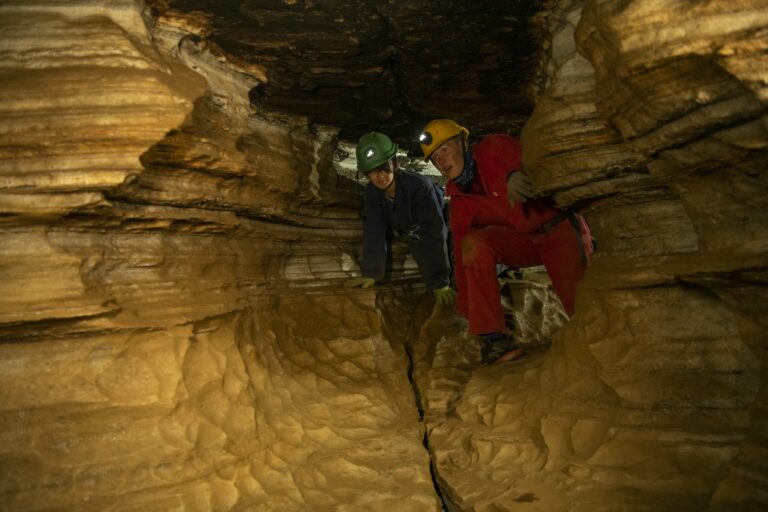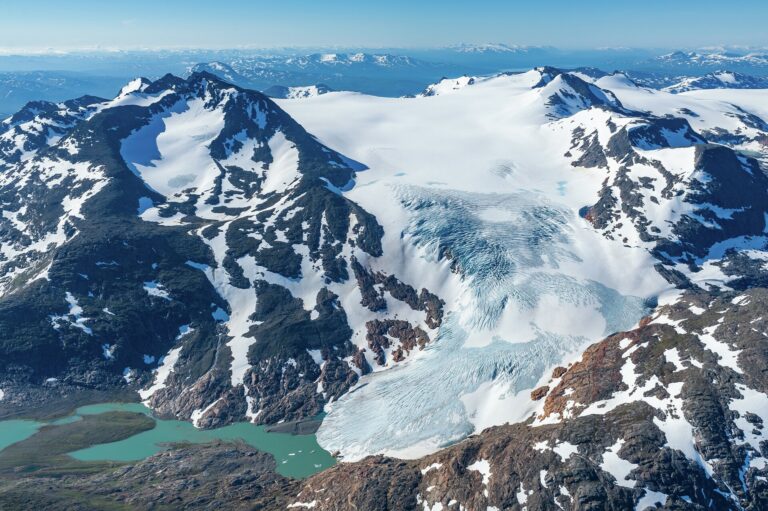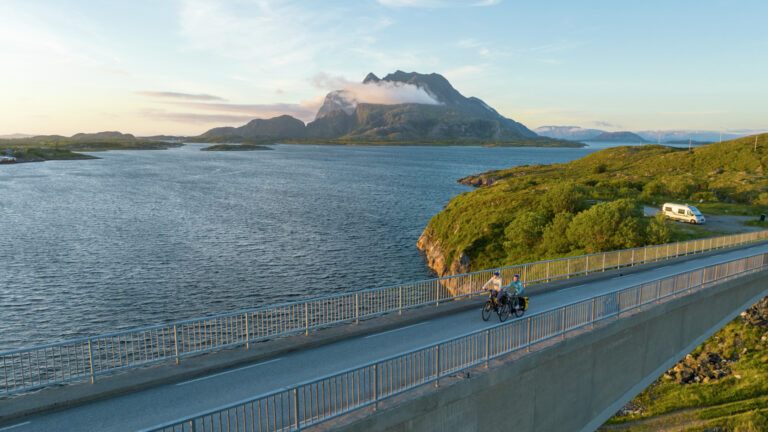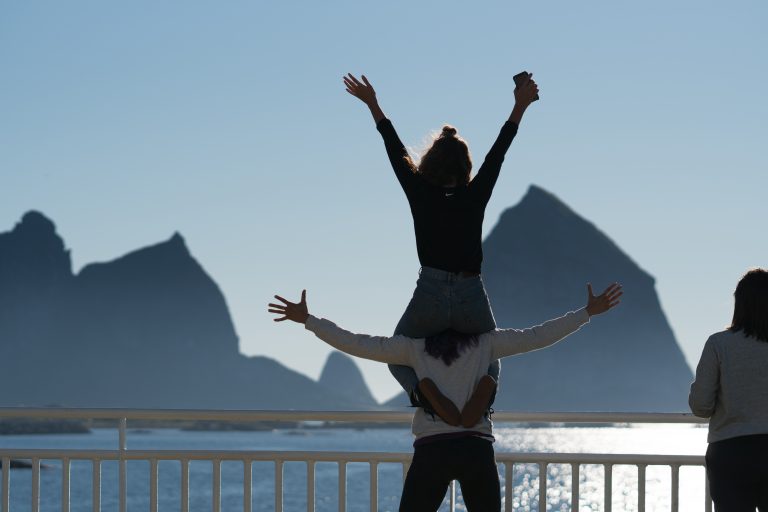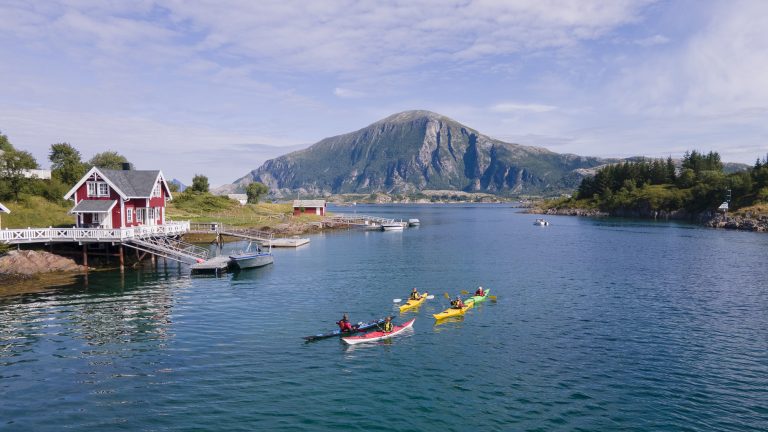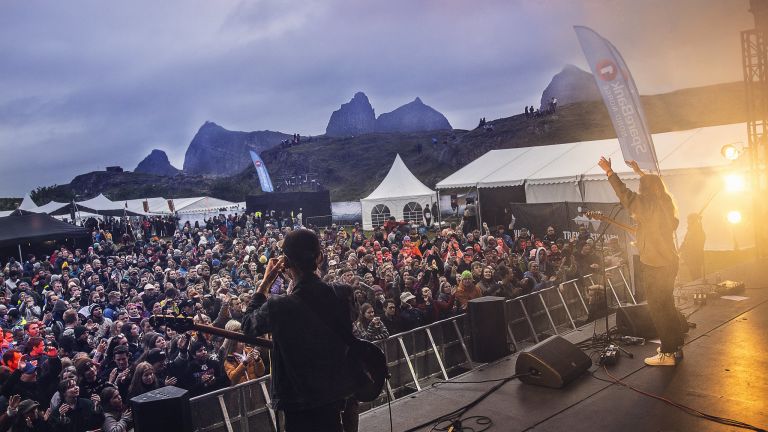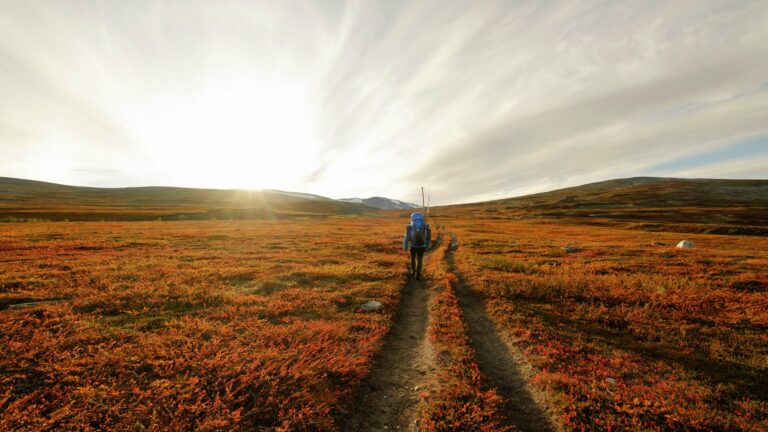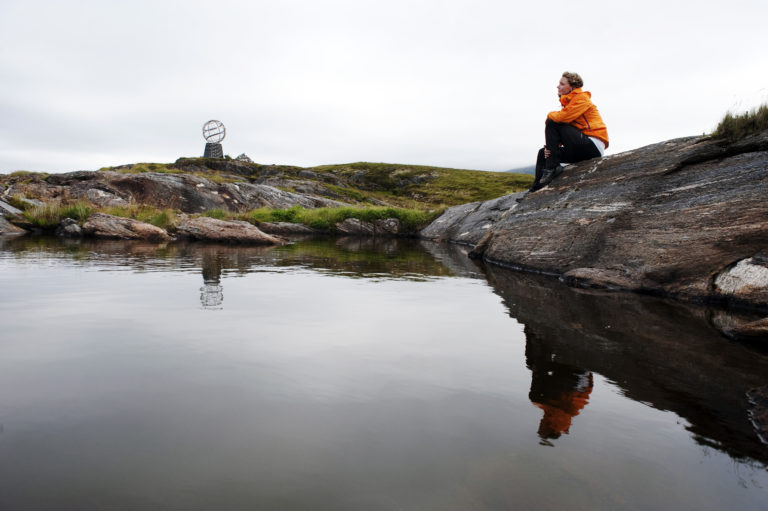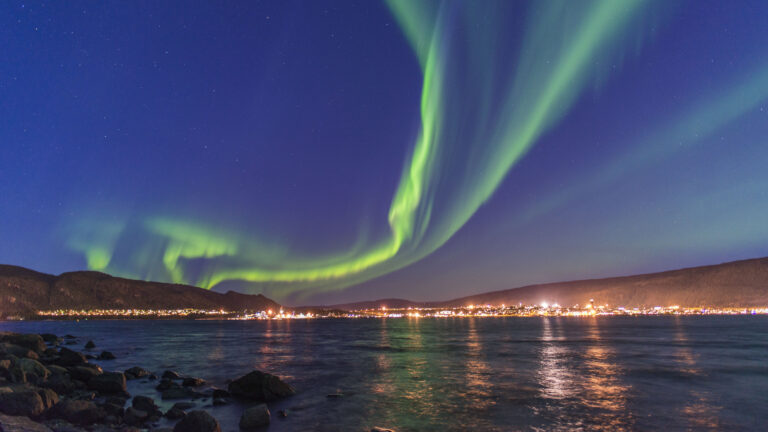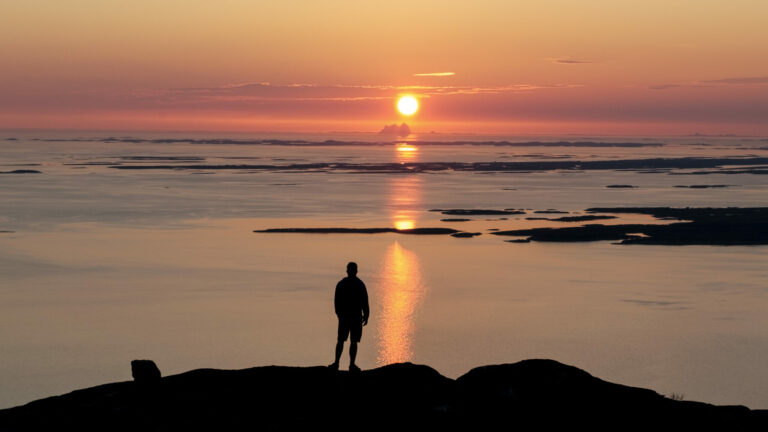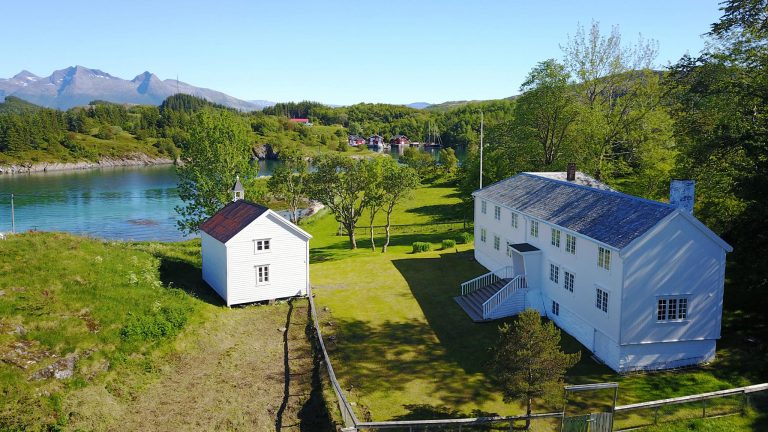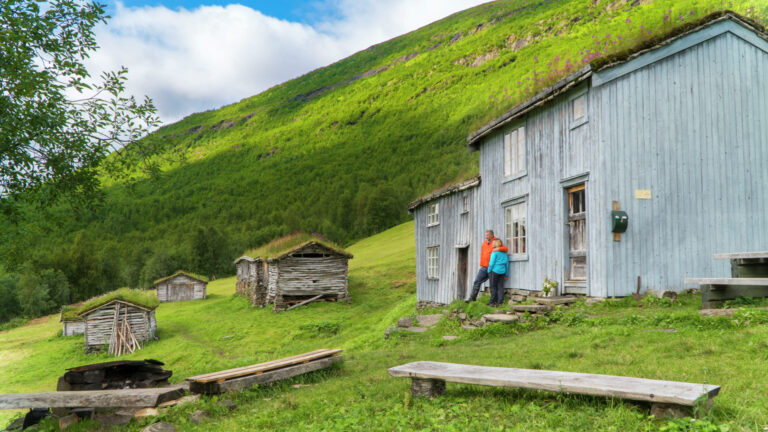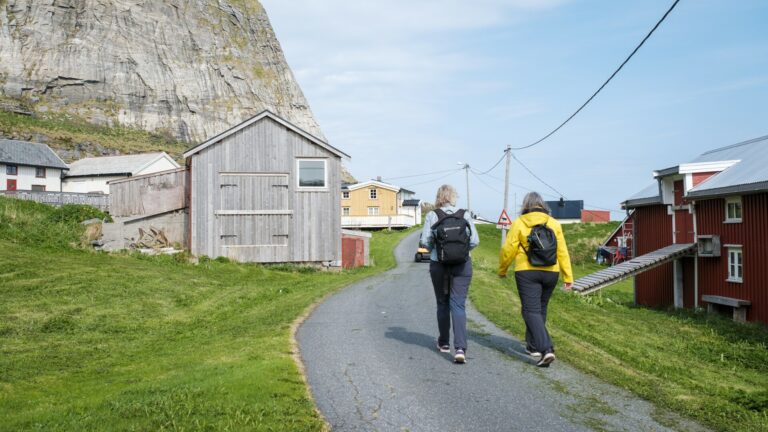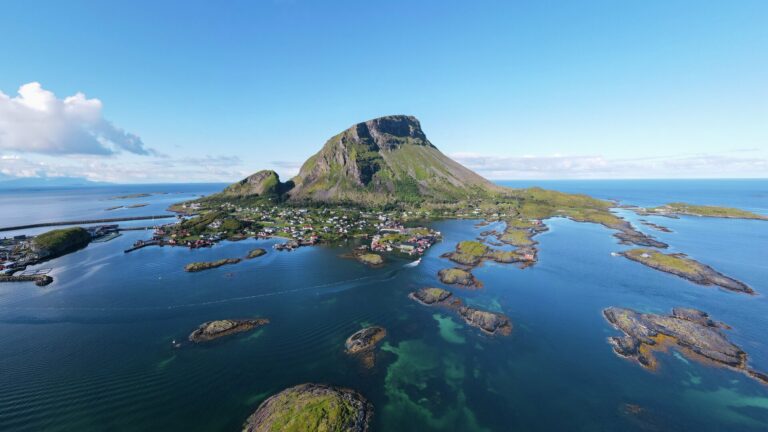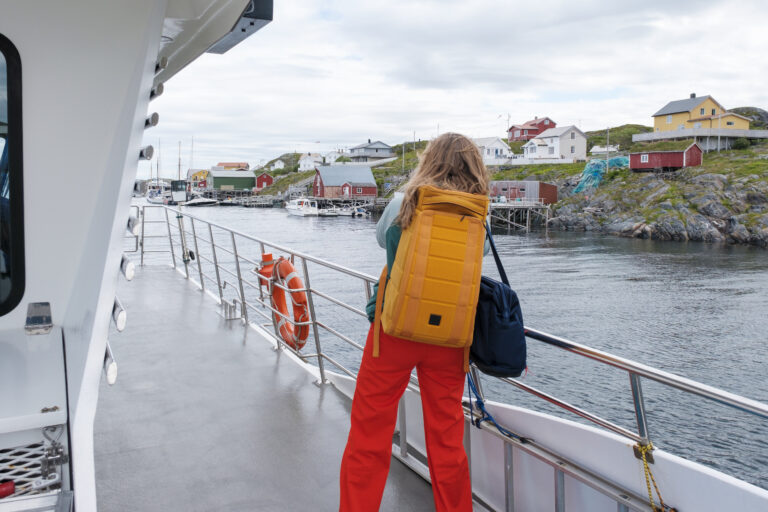Sometimes we are asked what you “have to see and do at Helgeland”. Naturally, what you see and do here is entirely up to you. You don’t “have” to do anything. But we’re still going to try to tempt you. Here’s some of our top attractions and best suggestions.
Torghatten, the Seven Sisters and other iconic coastal mountain
You can plan a great Helgeland holiday based on visiting the mountains mentioned in one of our renowned legends. These legendary mountains are Torghatten, the Seven Sisters (De syv søstre) and Hestmannen. You should also include the beautiful mountains Dønnamannen, Lovundfjellet, Rødøyløva and Trænafjellene.
A few of these, such as Torghatten and Rødøyløva, have been made very accessible. Others are more demanding to visit. Each of the Seven Sisters rises to about a thousand metres. For most of us, a summit hike to one is a sufficient challenge. A perfectly acceptable alternative is to walk up to one of the great viewpoints between the peaks, about halfway up. A few extreme hikers insist on conquering all Seven Sisters in a single day! Then again there is Trænstaven, which although a far lower peak, requires serious rock-climbing equipment. We think it far best to admire those climbers, and the mountain itself, from ground level.
The Vega World Heritage Site
If you have yet to visit Vega, here are some things you should know. This beautiful archipelago consists of over 6500 islands, islets and skerries. Visitor seeking an active holiday are especially attracted to these islands, and the sheltered waters between the islands are a paradise for kayaking. You can explore the main island on two wheels, hike up the mountains near its southern end, or just enjoy relaxing summer evenings on the shore and quay.
We should also mention that the Vega islands is a World Heritage Site, one of only eight Norwegian areas to which UNESCO has awarded this honour. If you visit, you will soon realize the reasons and why this is one of Helgeland’s most popular travel destinations.
Sjøgata street and the Helgeland Stairs
If you are travelling by train or driving highway E6 or come by train, we recommend a stop in Mosjøen. For a workout that raises your pulse, you can ascend Øyfjellet (818 m), the mountain that overlooks the town, by climbing the Helgeland Stairs. It now has 3000 stone steps, but by this autumn the Nepalese Sherpa builders will have added another thousand steps, all the way to the top
Afterwards (or instead) you can take a leisurely walk along the cafés and charming shops of the historic street Sjøgata. It is lined with well-kept wooden houses, wharf buildings, boat houses that date back to the 19th century, when Sámi lumberjacks floated large quantities of timber down the Vefsna river and English merchants controlled the region’s lumber exports.
Distinguished dining and impressive accommodation
The magnificent scenery of Helgeland can easily be overwhelming, but sometimes you can allow it to be just a beautiful background. Other times it seems like a perfectly balanced duet, as you enjoy great dining and good conversation. Perhaps you will savour it all in a venue by sea, a restored old inn, or a room overlooking a lush herb garden. Take advantage of the best that Helgeland has to offer!
Svartisen and Okstindan
If your travels take you near Mo i Rana, you really should experience the Svartisen glacier. Svartisen is the second-largest glacier in mainland Norway, covering a larger area than the cities of Oslo and Bergen combined. Once single large glacier, it is now divided into two. From the west it’s easiest to reach from the Holandsfjord in Meløy, and from the east by way of Svartisvatnet lake in Rana.
Also worth considering is a journey to the mountain range that is referred to as “the roof of Northern Norway”. Here in the Okstindan mountains is the highest peak in all of Northern Norway, Oksskolten (1916 m). The summit hike itself is rather demanding; an easier excursion is to hike up to the strikingly elegant Rabothytta cabin, perched dramatically at the edge of a glacier. The cabin offers a fantastic view of the Okstindbreen glacier.
Island hopping – by bike, kayak or express boat
Paradoxically, when you travel at a slower pace, especially using your own muscle power, you experience more of the Helgeland coast. Your adventure will be more intense – a sensory immersion. You can smell the salty Atlantic on the sea breeze, note the signals the seabirds send each other, and hear the subtle distinctions between the local Norwegian dialects. The pace will be your own. On the spur of the moment, you can take a detour on a forest path, climb a crag, and go ashore on an uninhabited islet. Satisfy your curiosity, see what’s there – explore and discover your own Helgeland.
The Træna Festival
Welcome to one of the most exciting festivals in Norway! But there’s no need to take our word for it; in 2015, The Guardian hailed it as “the perfect excuse to explore one of Europe’s most dramatic and wild environments (and be able to tell your friends about that crazy band you saw on a lump of rock at the edge of the Arctic Circle).” The combination of the island’s spectacular scenery, and the festival’s balance of well-known and established bands with up-and-coming artists, makes this an unsurpassed way to experience Helgeland.
The Arctic Circle and pristine national parks
If you have a keen appreciation of mountains and forests, we highly recommend spending a day or three in one of our national parks. Lomsdal-Visten and Børgefjell are particularly wild, while in the Saltfjellet-Svartisen National Park you can hike from cabin to cabin and cross the Arctic Circle. The Arctic Circle Centre is situated on Saltfjellet along highway E6, and if you want you can start your journey into the national park from there.
All three of these national parks are large, with plenty of space for both experienced and less-experienced outdoor adventure enthusiasts. There are some easy hiking trails that beginners can walk in an hour or two, as well as much longer routes that serious hikers can follow for many days. But please remember that these longer trips require considerable experience and proper equipment. For starters you must carry your own food and tent, and be an expert in finding your way with a map and compass
The northern lights
From late August to early April, you can see Helgeland’s skies come alive with the Northern Lights’ captivating dance in greens, purples, and reds. Sometimes it waves in a calm stream across the night sky, other times it’s a vibrant explosion of light and color. And no matter how often we’ve seen it ourselves, it never stops feeling like some sort of mesmerizing magic.
Did you know that old lore say you shouldn’t dance or wave at the Northern Lights yourself, for fear they might whisk you away? It’s an intriguing thought, and when the lights rage at their strongest, one can well understand how it could seem frightening to those who didn’t know what it was. Fortunately, we now know that we can wave and dance as much as we like towards the Aurora Borealis. But it’s also nice to just sit down and enjoy the spectacle with a nice cup of cocoa by a warm fire.
The midnight sun
Some of the locals jokingly advise that you can do your sleeping after you get home from your holiday. They have a point. You definitely don’t want to sleep away these magical summer nights! From the middle of June until early July, Helgeland enjoys the midnight sun, even south of the Arctic Circle. And the nights are long and bright well before and after this period as well. Native Helgelanders treasure these weeks; we consider it a well-deserved reward for having to tolerate the winter dark of December, when the sun scarcely rises over the horizon. So don’t sleep these nights away!
If you do sit up extra late or get up several hours earlier than you usually do, you may soon think of the hours between 11 pm and 6 am as “sacred”. Maybe you’ll spend them sitting on the edge of the pier, listening to the shore birds and watching fish break the mirror-calm water to catch low-flying insects. Perhaps you’re hiking at that hour and hear the melancholy song of the plover echoing through the mountains. Let these long, bright nights energise you, just like they do the appreciative locals. How you use those extra hours is, of course, entirely up to you – but it’s yet another way to discover your own Helgeland!
